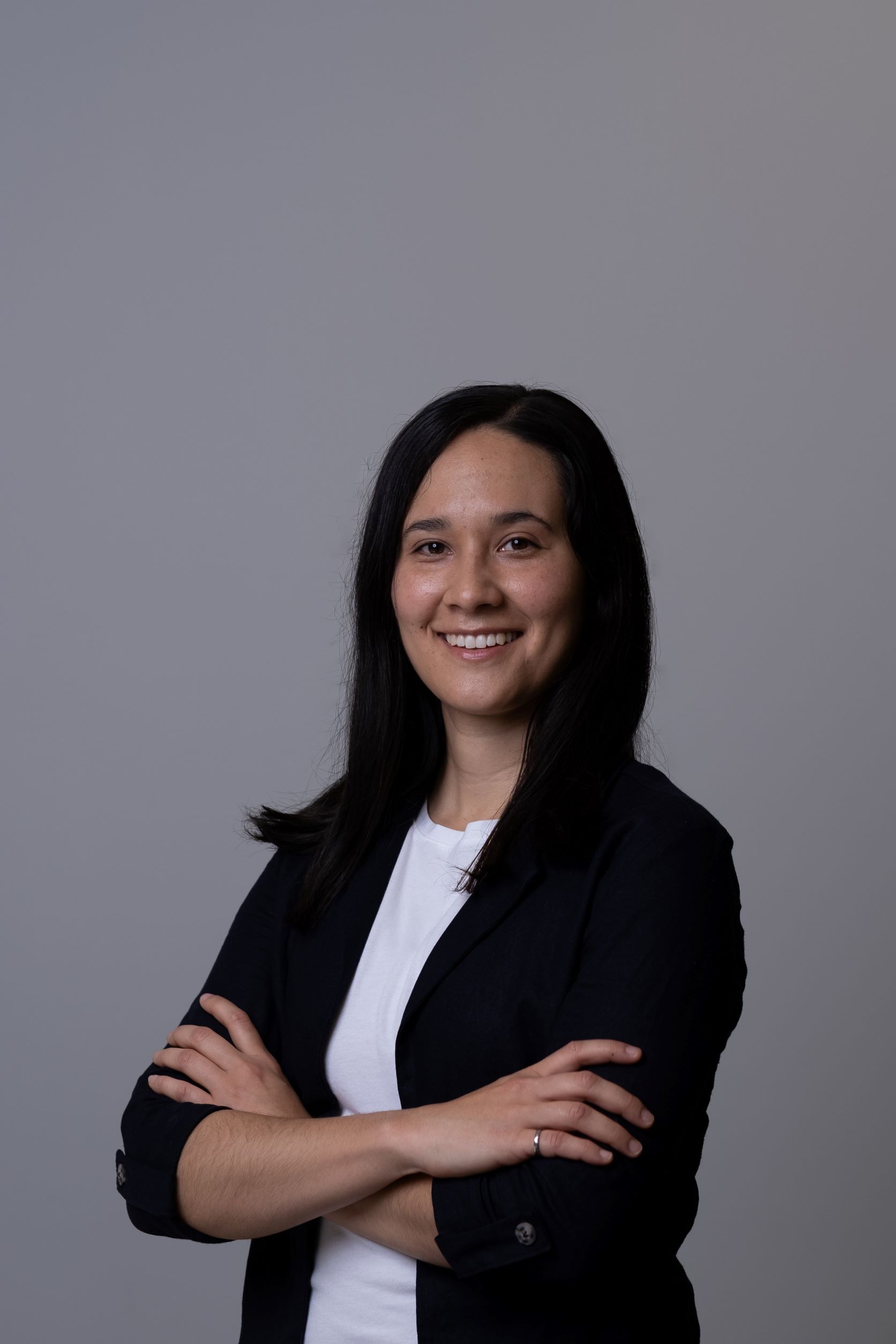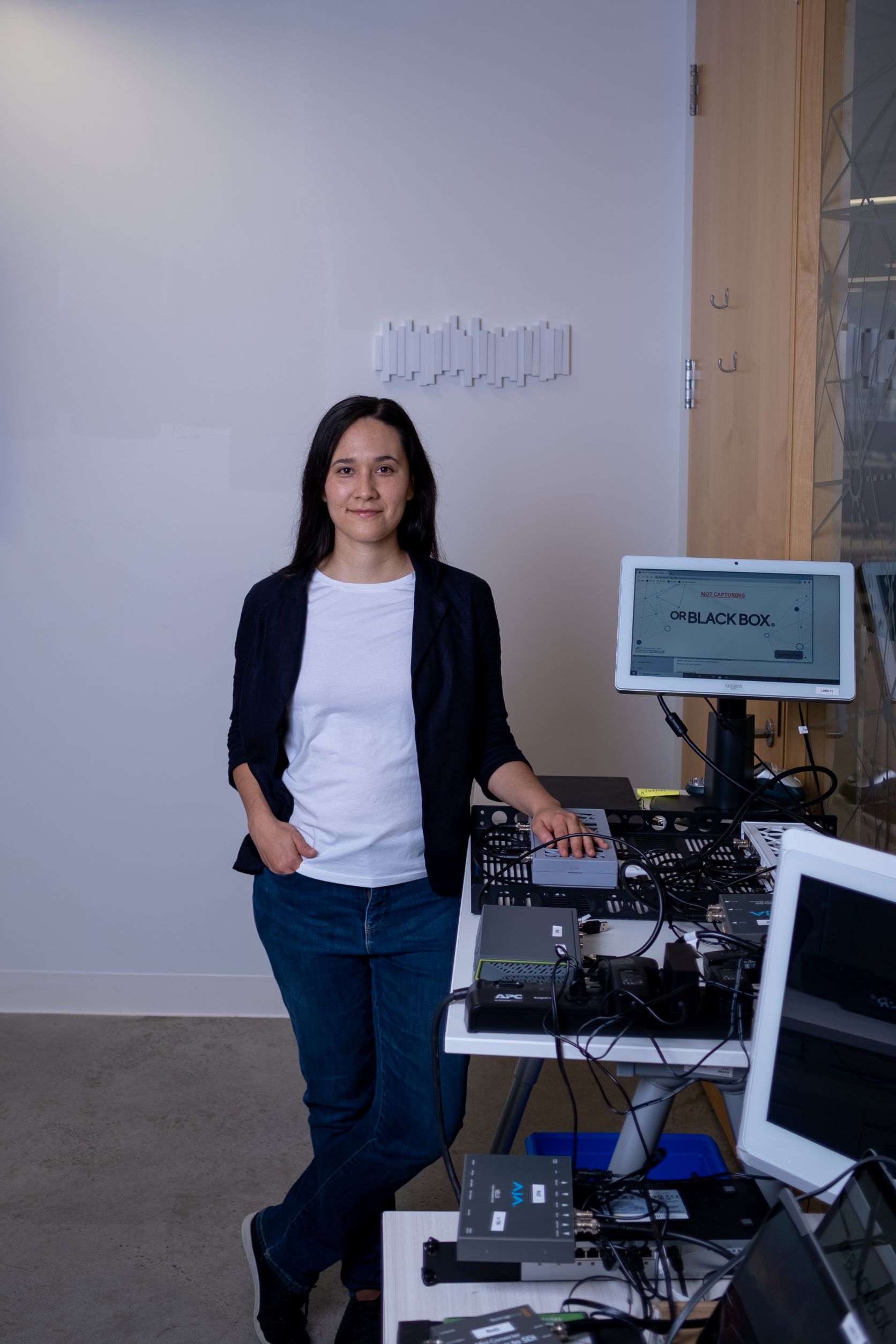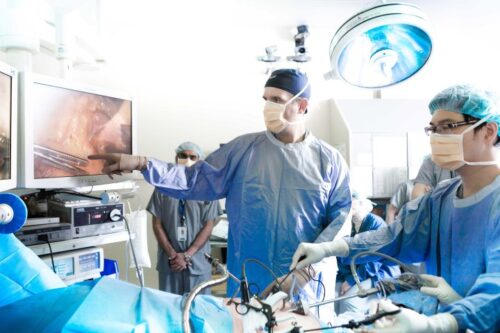Recently completing her graduate degree at U of T, Amalia Gil (BME MHSc 2T1) continued her career path as a clinical implementation engineer, aiming to help improve surgical safety in operating rooms (ORs). By capturing videos, sound, and other data from the OR during operations – akin to a black box on an airplane – these technologies enable hospitals to gain insights into how to improve quality and safety in their ORs. Here she describes her role, and what the future holds for safe surgical practices.

What do you do as a clinical implementation engineer?
My main role is to collaborate with hospitals to ensure a successful implementation of the various platforms offered by Surgical Safety Technologies (SST) including the OR Black Box® and Black Box Explorer®. I work with different departments at the hospital to implement these systems, including project planning, biomedical and clinical engineering, perioperative services, hospital facilities and engineering, integrators, and IT and networking departments. After the implementation is completed, I also support the hospital site by monitoring and addressing any issues that may arise. Outside of implementation, I also work in research and development (R&D) to continuously improve the SST platforms.
What’s a typical day at work?
The first thing I do in the mornings is to check on all active sites for any issues. If any issues are identified, I work with the SST team to address them. The rest of the morning is usually filled with client meetings, usually 2 or 3 clients to address designs, plan for implementation, or update on testing and go live. I also have meetings with the implementation team to update on the status of upcoming sites. In the afternoon I focus on either completing implementation designs, configuring hardware for shipment to a site that is ready for installation, remotely configuring a site that has been installed and is ready for testing, or performing testing to prepare for go-live. If time allows, I also work on R&D projects to better understand and address issues that arise in the field or find hardware improvements for the platforms.
What does a client interaction look like for you?
I most often interact with clients through phone calls and virtual meetings. I work directly with the project manager who identifies the leads at the hospital of the many required departments. We then organize various meeting to first identify the client needs, then to obtain all engineering specifications and drawings to provide the implementation design, and finally organize the installation and testing prior to go-live. Due to the pandemic all these discussions have been done through virtual meetings, but I look forward to visiting future client sites for more face-to-face interactions.
How do you help improve surgical safety?
I am a small piece of the puzzle on how SST helps to improve surgical safety. SST is composed of many groups that include software developers, data analysts, AI engineers, surgical analysts, surgeons, designers, project managers, finance, operations, sales, and of course the implementation team. We all work together to provide hospitals with a method to better understand what is happening in their ORs, to develop initiatives that can help improve OR quality and safety.
Why is surgical safety important in the operating room?
I would say surgical safety is a culture for continuous improvement to ensure the required outcome. Those providing patient care work tirelessly to ensure a successful outcome for the patient. A safety culture is a method to assess and develop systems that support health care providers in their efforts to help achieve successful patient outcomes. This type of culture also empowers people to raise concerns that can help continuously improve safety in the operating rooms without fear.

It should be noted that it is difficult to prevent all negative outcomes, there’s comorbidities and other unexpected issues, but if there is a safety culture, even if unexpected events occur, the systems surrounding health care providers can still provide enough protection for a successful outcome. And if the systems fail, then a safety culture can analyze the root causes without blaming people, and rather focus on how to improve support and processes to ensure a successful outcome the next time around.
What are some of the challenges in improving surgical safety?
I would guess that the biggest challenge to improve surgical safety is that of obtaining data during operations to identify areas of improvement. Before the OR Black Box®, the most common processes to understand what could have led to an issue was to do an analysis post incident. But the problem with this approach is that this analysis often occurred days or weeks after the incident which made it difficult to put together exactly what happened to identify what could be improved. This is the gap that we hope to fill with the OR Black Box®; to provide a method that can help identify areas of improvements for hospitals to develop systems to help improve surgical safety.
Did your research in graduate school contribute to what you are doing now?
My graduate research was supervised Dr. Teodor Grantcharov at the International Center for Surgical Safety (ICSS), Li Ka Shing Knowledge Institute of St. Michael’s Hospital. My research focused on developing a method of identifying distractions with eye-tracking technology and the OR Black Box® system. I would have to say that my research contributed to what I am doing now. For my thesis, I had the opportunity to work with various departments at St. Michael’s Hospital to successfully integrate the eye-tracker into the OR. I worked with biomedical engineering, facilities, electrical, environmental services, perioperative services, and nurses, surgeons, and patients. This gave me the experience required to do the work I do now as a clinical implementation engineer.
What is the next step in improving surgical safety?
I would say the next step is to integrate a safety culture in hospitals that can help identify areas of improvement that does not focus on blaming but rather continuously improve the systems and processes that can support health care providers in ensuring successful patient outcomes. The other steps are to share this knowledge across hospitals to create open discussions about surgical safety and develop new ideas. The more players there are working towards a change in safety culture the easier it will become, and the closer we will come to creating this required systemic change.

